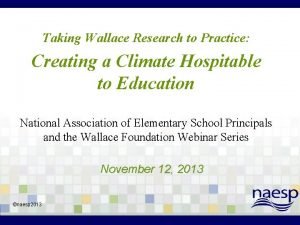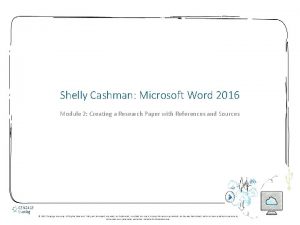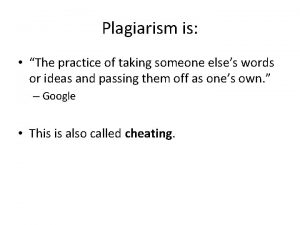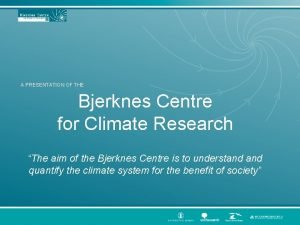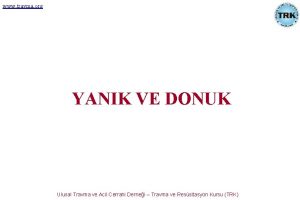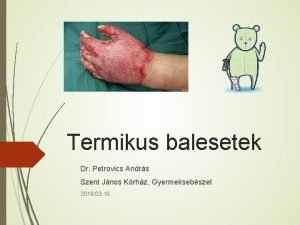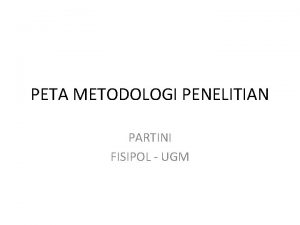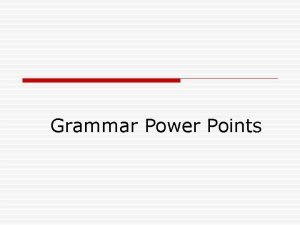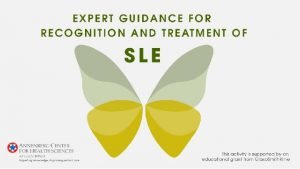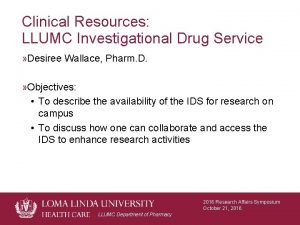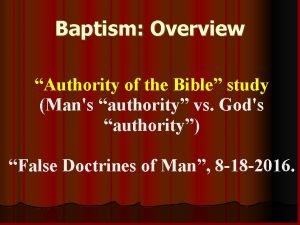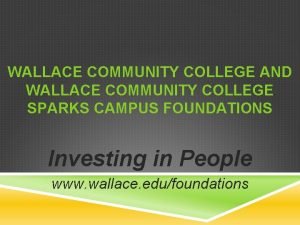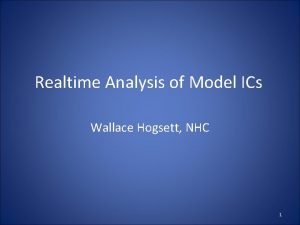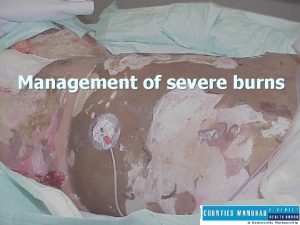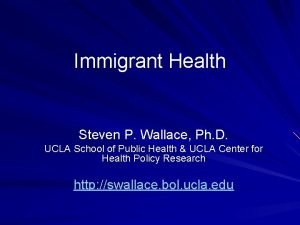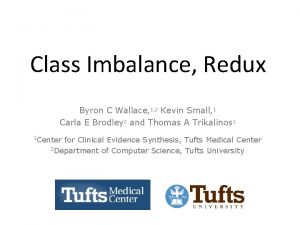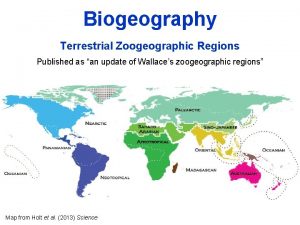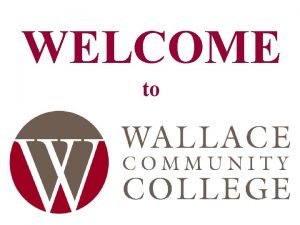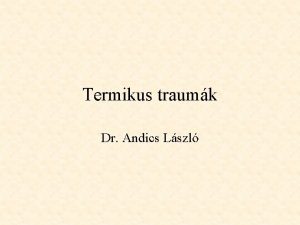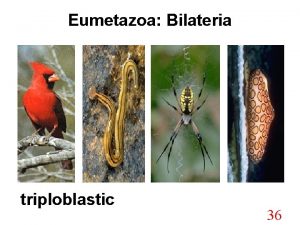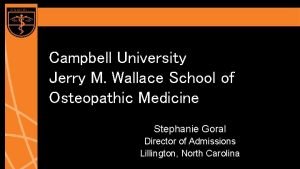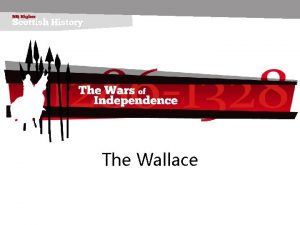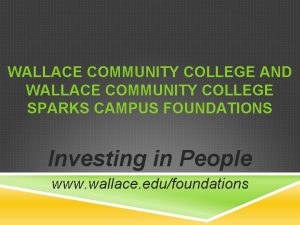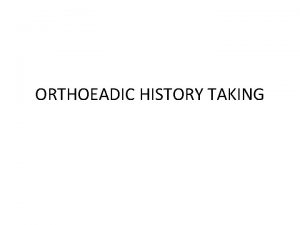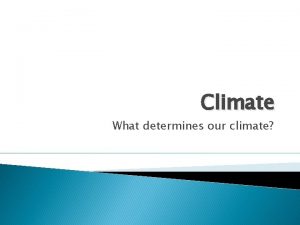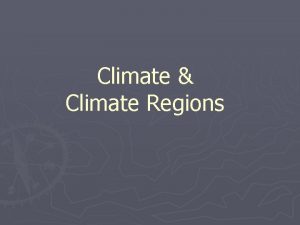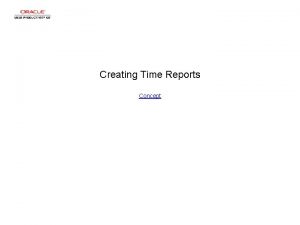Taking Wallace Research to Practice Creating a Climate














































- Slides: 46

Taking Wallace Research to Practice: Creating a Climate Hospitable to Education National Association of Elementary School Principals and the Wallace Foundation Webinar Series November 12, 2013 ©naesp 2013

The School Principal As Leader: Guiding Schools to Better Teaching and Learning 2013 www. wallacefoundation. org www. naesp. org Since 2000, the Wallace Foundation has published more that 70 reports on leadership.

Five Key Practices Shaping a vision of academic success for all students. Creating a climate hospitable to education. Cultivating leadership in others. Improving instruction. Managing people, data and processes to foster school improvement.

PARTICIPANT POLL In comparing teacher ratings identifying the most effective principals which element ranks number one in developing an atmosphere of caring and trust in a school? 1. Principals who set standards for highly instructional-focused conversations 2. Principals who hire and retain great teachers 3. Principals who focus on managing and balancing a leader’s responsibilities 4. Principals who are visionaries and share leadership

Moderator, Carol Riley Director, National Mentor Program, VA Susan Holiday Gladys Noon Spellman Elementary School Prince George’s County Schools Maryland Kirk Downing Brown Elementary School Nantick School District Massachusetts Peter Carpenter Emmorton Elementary School Harford County Schools Maryland

Kirk Downing Brown Elementary School Nantick School District Massachusetts A Climate of Academic Success for All Students

Cultivating a Climate Focused on Student Achievement The principal’s role in creating conditions that motivate educators to strive for excellence.

Brown Elementary Demographics 2012 -2013 • 458 Students 223 male, 235 female • African American 3. 5% • Asian 18. 6% • Hispanic 7. 4% • White 65. 7% • Multi-race 4. 8% • ELL Population (22% English as second language) 10. 0% • Free and Reduced Lunch 11. 6% • Students with Disabilities 9. 2%

Brown School Performance MCAS Rank (Massachusetts State Assessment) Special education rate and ELL Percentage • 2010 Ranked ELL 55 th/903 10. 6% Sped, 2. 0 % • 2011 Ranked ELL 67 th/895 9. 6% Sped, 6. 5% • 2012 Ranked ELL 49 th/890 8. 6% Sped, 7. 2% • 2013 Ranked ELL 65 th/886 9. 2% Sped, 10%

Creating a Climate Hospitable to Education • • • • (Feedback from Brown School Faculty and Staff) Serves others Project calm and kindness Presume positive intent Lead with consistency Support the needs of the faculty Define values and beliefs Transparent agenda Build leadership capacity in others Acknowledge the expertise of others Remain humble and give away credit Show your humanity (We do have lives outside of school. ) Be the change you expect to see in others Build partnerships with your most challenging parents Engage others when they are calm Follow up on decisions to measure effectiveness and show you care

Trust Begins with the Principal • Have an Entry Plan – Measure the current conditions before you institute change – Listen actively/empathetically – Gather as much information as you can possibly consume, then gather more. • Establish purposeful channels of communication • Treat people with the degree of professionalism you believe you deserve • Be reasonable • Eliminate fear • Use Good Judgment • Own your mistakes

What specific behaviors can principals employ in creating a climate hospitable to education?

Take the First Step • Project calm and kindness • Identify the positive qualities and contributions of every staff member • Complement others • Keep your promises! People will measure you on whether you keep your promises • Walk the school daily – establish systems

Establish Purposeful Channels of Communication • Principal’s Advisory with the Teacher’s Association Monthly • Admin/Mental Health Team Weekly • Special Education Faculty Meeting Weekly • Literacy Meeting Weekly • PTO Leadership Monthly • School Council Monthly • Daily Meeting with the secretary • Child Study and ACT (Assist Children and Teachers)

Build Systems Dependent on a Team • Executive Functioning support for every classroom – First twenty minutes and last fifteen minutes of each day – All hands on deck • Child Study Process – Consultancy Protocol (Critical Friends) – Build expertise among the staff – Back the talk of the meeting with action in the classroom

THANK YOU Kirk Downing A Climate of Academic Success for All Students

Susan Holiday Gladys Noon Spellman Elementary School Prince George’s County Schools Maryland Deliberate Actions that Lead to a Positive Climate

Demographics and School Information § K-6 School 500 Students § Free or reduced lunch 85% § ESOL Students: 33% § 4 ESOL Teachers § Self Contained - K-2 § Departmentalized - Grades 3 -6 § School-Wide Title I Program

How have we created a climate hospitable to all stakeholders?

Leadership Skills and Practices • Transparency • Deliberate Behaviors • Feedback • Receptiveness

Transparency • Be explicit with what you are going to do and why you are going to do it. • Inform all stakeholders about your methods of communication.

Deliberate Behaviors Be strategic with your actions when you speak with stakeholders. Each stakeholder has a different need. Find that ‘need’!

Feedback • After key events in school, ask for feedback from stakeholders. • Be receptive to the feedback. Don’t take it personally. • Make use of their feedback-Be deliberate!

Receptiveness • Stakeholders will always share their thoughts. Just listen! • The majority of people want to make their school a great place. People want their voices heard.

THANK YOU Susan Holiday Be Open and Honest and Accepting of All

Peter Carpenter Emmorton Elementary School Harford County Schools Maryland It is All About Learning!

Time is made… …for what is valued. What is valued by you as the principal becomes valued by the staff. What is valued by the staff is transferred to students.

Our primary value should be LEARNING… Where is the focus for learning in your school? – Students? – Teachers? – Families? – Leadership?

Emmorton School in a Nutshell • 555 students in Grades K-5 • Located in suburban Bel Air, Maryland • Free and reduced lunch • ESOL Students 15% 10% • Special Education Students 12%

Soaring with the Eagles From 2010 2013 – Grade 3: 91% of students proficient and advanced on Maryland School Assessment (MSA) • 97% of students proficient and advanced – Grade 4: 94% of students proficient and advanced on Maryland School Assessment (MSA) • 98% of students proficient and advanced – Grade 5: 91% of students proficient and advanced on Maryland School Assessment (MSA) • 100% of students proficient and advanced

Student Learning • How can I show that student learning is a priority in our school? – From every venue, share the learning for which you’re most proud - from the stage, Twitter, Facebook, etc. – Student work displayed around the school: in the office…in the main hallways…outside of classrooms. Hint: Administrators can use post-it notes to help provide feedback to kids on their work.

Student Learning • Faculty Meeting Shout Outs • WALK AROUND…every day in some way. – Make a point to tell parents via email, phone calls, or in the car rider line at the end of the day what you see their children doing. • Bottom Line: In everything, ask – Are we doing what is in the best interest of students?

Teacher Learning • Align the school mission to ensure that learning is at the heart of the mission. • Provide layered opportunities for teacher learning, such as – Build healthy team Professional Learning Communities – Make Faculty Meetings professional development instead of information sharing. – Create Professional Learning Network in Twitter – Implement Wonderful Wednesdays – Align Professional Development Plans to focus on learning. – Demonstrate Lessons… BY YOU!!

Anchor Charts

Teacher Learning • Constantly ask teachers what they need and get it for them! • Post Observation Conferences focus on 5 questions: 1. 2. 3. 4. 5. What did you want students to know and be able to do? Why is that important? What was successful? What could have been modified to help meet the needs of your learners? What is something that you learned that you will now apply to your practice? Hint: Make a wall in your office with post-it notes. Once your teacher makes a goal, add it to your post-it note wall. Take the post it note off the wall a few weeks later and go have a follow-up conversation with the teacher about how it went.

Community Learning Less formal evenings that look like they’re for fun but have strong learning elements in them. Family Nights - A time for parents to learn – Family Math Nights – Family Reading Nights – Family STEM nights

Community Learning • Establish a Professional Learning Network with parents on Twitter where you ask questions of parents monthly and access feedback from the community at large. • Make contacts with people during the car rider line and let them know the good things their children did. • Invite community input on your School Improvement Team.

Leadership Learning • Schedule time to allow teachers to meet, plan, and share. • Reading together: - “Book Study” style. • Expecting all members to be part of all things instructional… – Scoring benchmark assessments with teachers. – Planning – Participating in weekly PLC meetings (not facilitating: being a part of the team)

Leadership Learning • Virtual meetings such as Twitter Chats. • Twitter has become my “morning professional journal reading. ” – more information than reading a traditional newspaper. • Conference attendance— – Bring TEACHERS!


THANK YOU Peter Carpenter A vision for leadership success!

CREATING A CLIMATE HOSPITABLE TO EDUCATION Great teachers are retained and successful in schools with great principals! Teachers perform their best in schools that have a climate established by principals, like Susan, Kirk, and Peter, who will: Øsupport the development of their skills. Øpromote professional learning communities. Øclearly acknowledge their contributions leading to student achievement

Creating a Climate Hospitable to Education Q&A Write your questions for the presenters in the chat box.

Future Webinars Taking Wallace Research to Practice Tuesday, December 10, 2013 Cultivating leadership in others. January 14, 2014 Improving instruction. February 11, 2014 Managing people, data and processes to foster school improvement.

Resources §Learning From Leadership: Investigating the Links to Improved Student Learning, Wallace Foundation, July 2010 §Central Office Transformation for District-Wide Teaching and Learning Improvement, Center for the Study of Teaching and Policy (University of Washington), 2010 §Improving School Leadership: The Promise of Cohesive Leadership Systems, RAND Corporation, 2009 §Assessing the Effectiveness of School Leaders: New Directions and New Processes, The Wallace Foundation, 2009 §Preparing School Leaders for a Changing World: Lessons from Exemplary Leadership Development Programs – Final Report, Stanford University and The Finance Project, 2007 §How Leadership Influences Student Learning, Center for Applied Research and Educational Improvement (University of Minnesota) and Ontario Institute for Studies in Education (University of Toronto), 2004

National Association of Elementary School Principals THANK YOU! Carol Riley Susan Holiday Peter Carpenter Kirk Downing
 Creating a climate hospitable to education
Creating a climate hospitable to education Climate change 2014 mitigation of climate change
Climate change 2014 mitigation of climate change Cengage word module 2 creating a research paper
Cengage word module 2 creating a research paper Chapter 2 taking charge of your health vocabulary practice
Chapter 2 taking charge of your health vocabulary practice The practice of taking someone else's work
The practice of taking someone else's work Ozeanklima
Ozeanklima Bjerknes centre for climate research
Bjerknes centre for climate research Cru climate research unit
Cru climate research unit Wallace 9'lar kuralı
Wallace 9'lar kuralı William wallace fate
William wallace fate Foy e wallace
Foy e wallace Petrovics andrás
Petrovics andrás Stein w. wallace
Stein w. wallace Locke wallace relationship adjustment test
Locke wallace relationship adjustment test Alteracin
Alteracin Model siklus penelitian wallace
Model siklus penelitian wallace Angelo buono
Angelo buono Wallace weber
Wallace weber Russell wallace day
Russell wallace day Daniel wallace md
Daniel wallace md Daniel j wallace md
Daniel j wallace md Desiree wallace
Desiree wallace Foy e wallace
Foy e wallace Regula lui wallace
Regula lui wallace Aportes de wallace
Aportes de wallace Abraham lincoln william wallace lincoln
Abraham lincoln william wallace lincoln Wallace community college sparks campus
Wallace community college sparks campus Wallace hogsett
Wallace hogsett Professor angela wallace
Professor angela wallace Wallace rule of nine
Wallace rule of nine Steven wallace ucla
Steven wallace ucla Baldwin wallace tuition
Baldwin wallace tuition Wallace chen
Wallace chen Byron c. wallace
Byron c. wallace Subtitudes
Subtitudes An update of wallace’s zoogeographic regions of the world
An update of wallace’s zoogeographic regions of the world William wallace lincoln
William wallace lincoln Wallace frança curriculo
Wallace frança curriculo George c wallace community college
George c wallace community college Wallace féle szabály
Wallace féle szabály Alexandra wallace ucla
Alexandra wallace ucla Wallace diamond test for urobilinogen in urine
Wallace diamond test for urobilinogen in urine Wallace-bolyai-gerwien theorem
Wallace-bolyai-gerwien theorem Eumatozoa
Eumatozoa Zita wallace letter to kevin rudd
Zita wallace letter to kevin rudd Jerry wallace campbell university
Jerry wallace campbell university Is survival selfish essay
Is survival selfish essay
